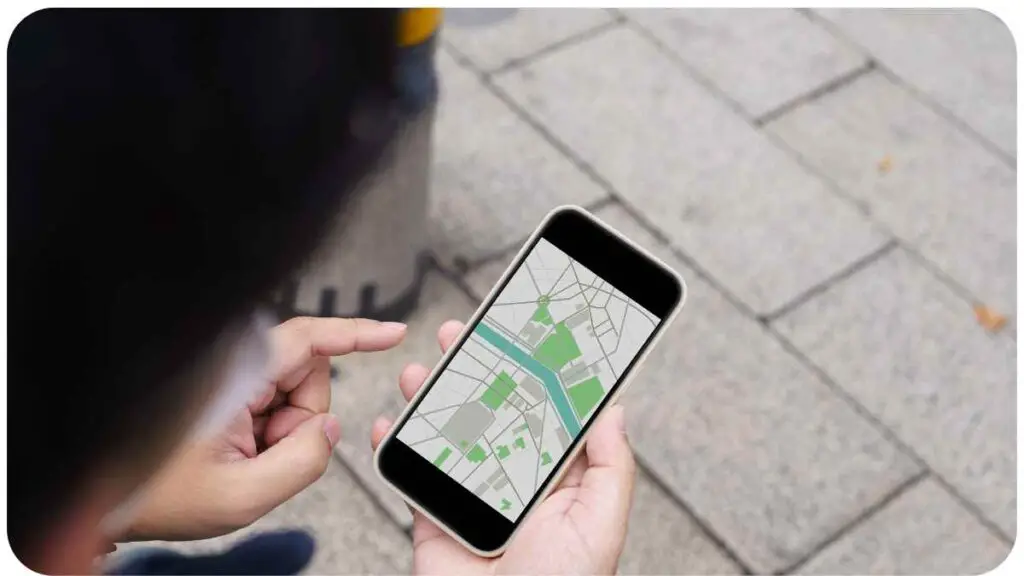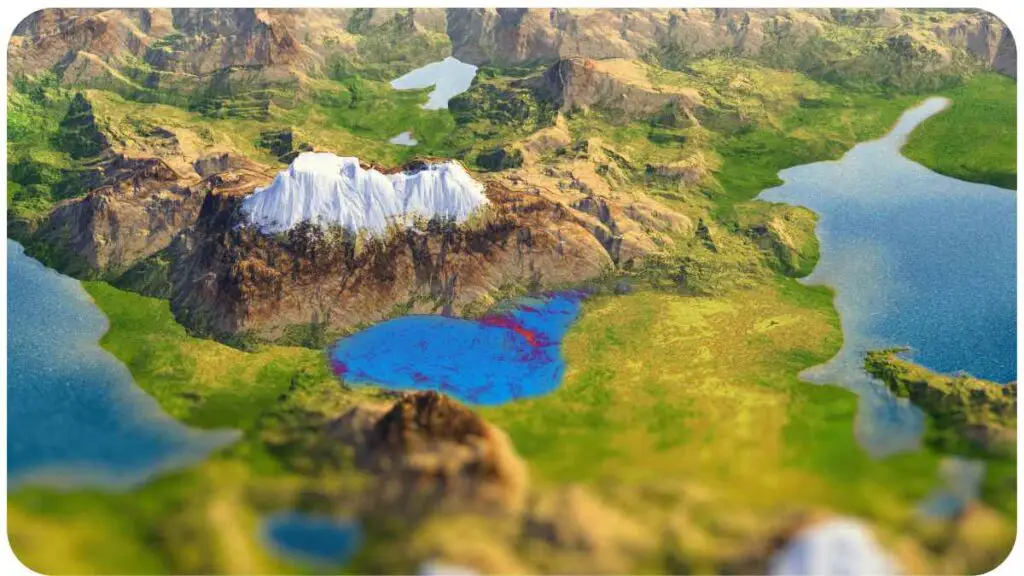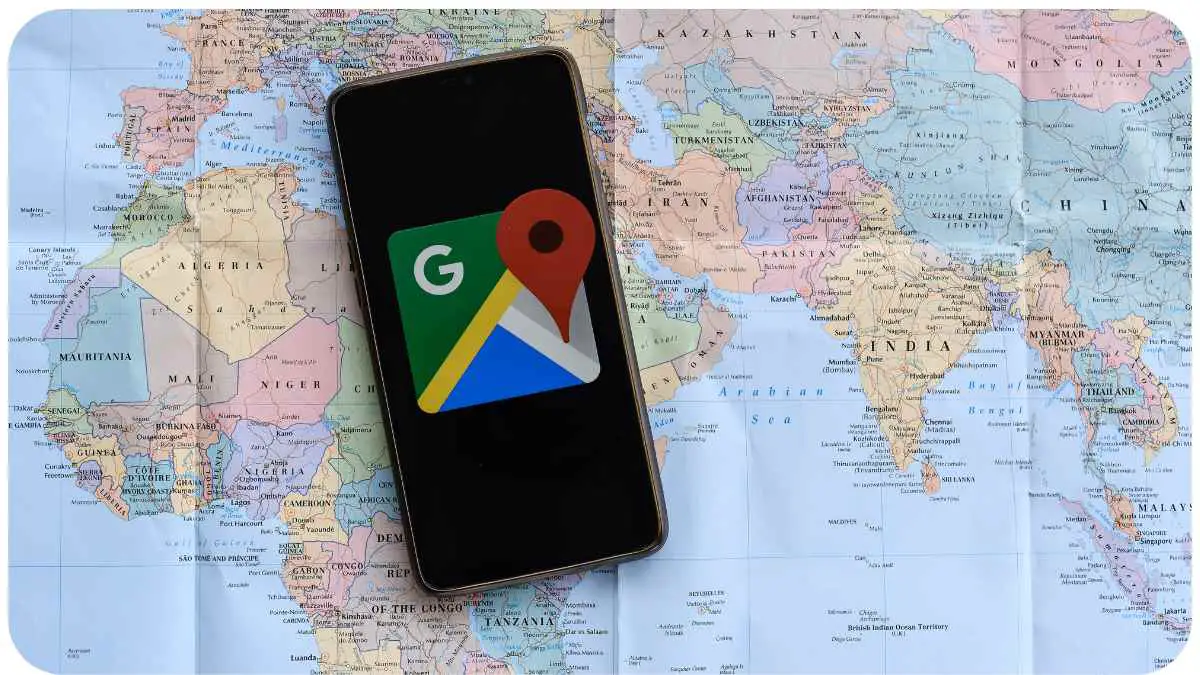Have you ever dreamt of going on an exciting treasure hunt? If so, you’re in luck! With the help of Google Maps, you can embark on thrilling adventures and uncover hidden gems right from the comfort of your own home.
In this quick and easy guide, we will explore how to use Google Maps for treasure hunting, leveraging its powerful features to uncover valuable treasures and unknown locations.
Whether you’re a seasoned explorer or new to the world of treasure hunting, this guide will provide you with valuable insights, tips, and techniques to make your treasure hunts successful and enjoyable.
| Key Takeaways |
|---|
| Utilize Google Maps’ features and tools to enhance your treasure hunting experience. |
| Collaborate with fellow treasure hunters to share knowledge and resources. |
| Use layers and satellite view to analyze terrain, topography, and historical imagery. |
| Plan your treasure hunt by researching historical points of interest and solving clues. |
| Document your findings and share your experiences with the treasure hunting community. |
| Pack essential gear, stay safe, and follow legal considerations while treasure hunting. |
Getting Started with Google Maps
Before we delve into the treasure hunting aspect, let’s familiarize ourselves with the basics of Google Maps. Developed by Google, this web mapping service provides a user-friendly interface that allows you to access maps, satellite imagery, and Street View panoramas from all around the world.
To begin your treasure hunting journey, visit the Google Maps website or open the app on your mobile device. Once you’re on the platform, you’ll be ready to explore the hidden treasures awaiting your discovery.
In today’s digital age, as explorers try to integrate traditional hunting methods with modern tools, learning using GPS in your treasure hunt can significantly enhance the experience, adding precision to your adventures
Exploring the Features of Google Maps

Google Maps offers a plethora of features that can greatly enhance your treasure hunting experience. Let’s dive into some of the key functionalities and explore how they can assist you in your adventures.
Searching for Treasure Locations
The first step in any treasure hunt is to identify potential locations. Using Google Maps’ search bar, you can easily find treasures by entering specific keywords such as “buried treasure,” “hidden treasure,” or even the name of a famous treasure, like “Blackbeard’s lost ship.” The search results will provide relevant information and locations for you to explore further.
| Brand | Treasure Location |
| Blackbeard | Caribbean Sea |
| El Dorado | South America |
| Oak Island | Nova Scotia, Canada |
Utilizing Street View for Visual Exploration
One of the most powerful tools in Google Maps is Street View. This feature allows you to virtually navigate through the streets and paths of various locations, providing a realistic and immersive experience. When planning your treasure hunt, make sure to use Street View to explore the vicinity of your target location. Look for peculiar landmarks or features that might guide you towards the hidden treasure.
Creating Custom Maps for Treasure Hunting
To keep track of your treasure hunting adventures, Google Maps enables you to create custom maps. By adding markers, lines, and shapes, you can mark important locations, create routes, and outline areas of interest. This feature is particularly useful when you have multiple treasures to discover or when you want to share your map with fellow treasure hunters.
Embarking on a quest for hidden treasures is not just about having the right tools; it’s also vital to be aware of the regulations. Delve into the navigating legal issues in treasure hunting to ensure your expeditions remain within the bounds of the law.
Collaborating with Others on Treasure Hunts
Treasure hunting is often more enjoyable when you embark on the adventure with friends or like-minded individuals. Google Maps allows you to collaborate with others by sharing your custom maps, providing a platform for collective brainstorming and exploration.
Together, you can pool your knowledge and resources to increase your chances of finding the next hidden treasures.
Discovering Nearby Landmarks and Points of Interest
When exploring a specific area for hidden treasures, it’s essential to be aware of the nearby landmarks and points of interest. Google Maps provides a comprehensive database of popular attractions and notable locations, making it easier for you to orient yourself and search for clues. By utilizing the “Explore” feature on the app, you can discover places to visit while on your treasure hunt, adding an element of adventure to your journey.
Advanced Techniques for Treasure Hunting
Once you’ve familiarized yourself with the basic features of Google Maps, it’s time to delve into some advanced techniques to enhance your treasure hunting skills. By utilizing these techniques, you can uncover hidden details, analyze terrain, and gain a competitive edge in your quest for hidden treasures.
Using Layers to Overlay Additional Information
Google Maps offers various layers that allow you to overlay additional information on the map. These layers can provide valuable insights relevant to treasure hunting. For example, the “Terrain” layer displays the topography of an area, helping you identify potential hiding spots based on elevation and landforms.
The “Traffic” layer helps you plan efficient routes to your treasure locations, taking into account real-time traffic conditions. Experiment with different layers to access the information that is most relevant to your quest.
Leveraging Satellite View
Satellite View in Google Maps provides a bird’s-eye perspective of a location by displaying high-resolution satellite imagery. This feature is particularly useful for identifying hidden or secluded areas where treasures might be concealed. By switching to Satellite View, you can study the landscape, spot suspicious patterns, and identify potential areas of interest that may not be easily visible in regular map view.
While technological advances, such as Google Maps, have made treasure hunting more accessible, there are still challenges. Discover practical advice on what to do if your detector gets wet and other challenges faced by modern-day treasure hunters.
Incorporating Historical Maps and Imagery
To gain a deeper understanding of the areas you’re exploring, consider incorporating historical maps and imagery into your treasure hunting toolkit. Google Maps allows you to access archived images and historical map overlays, offering a glimpse into the past and potentially revealing forgotten landmarks or hidden pathways. By comparing historical maps with current satellite imagery, you may find clues or anomalies that lead you closer to buried treasures.
Analyzing Terrain and Topography

Treasures are often hidden in unique or hard-to-reach locations. By analyzing the terrain and topography of an area using Google Maps, you can identify potential hiding spots and strategize your treasure hunting approach. Pay attention to natural features such as hills, caves, or bodies of water, as these may indicate areas likely to contain hidden treasures. Remember, sometimes the most unexpected landscapes hold the greatest secrets.
Utilizing Distance Measuring Tools
Determining the distance between different points of interest is crucial for planning your treasure hunts effectively. Google Maps provides distance measuring tools that allow you to calculate distances accurately. By measuring distances between landmarks, potential hiding spots, and markers on your custom map, you can optimize your route and prioritize areas that need further exploration.
| Landmark | Distance (in miles) |
| Starting Point | 0 |
| Cave of Wonders | 2.7 |
| Ancient Ruins | 5.2 |
| X Marks the Spot | 6.8 |
| Hidden Waterfall | 8.5 |
Tips and Strategies for Successful Treasure Hunting
To make the most of your treasure hunting experience, consider implementing these tips and strategies that seasoned treasure hunters swear by. These insights and techniques will help you not only find hidden treasures but also enjoy the process and create lasting memories.
Researching Historical Points of Interest
Before diving into your treasure hunt, conduct thorough research on historical points of interest in your chosen location. Familiarize yourself with the area’s history, legends, and myths. By understanding the context surrounding a potential treasure, you can uncover valuable clues and increase your chances of success.
As you venture into the fascinating world of treasure hunting, integrating tech tools like Google Maps is just the beginning. Equip yourself further by understanding the items required for treasure hunting, ensuring a successful and safe quest.
Analyzing Clues and Solving Puzzles
Treasure hunts often involve deciphering clues and solving puzzles. When faced with a challenging riddle, use Google Maps to your advantage. Explore the surroundings of each clue, search for relevant landmarks or patterns using Street View, and cross-reference your findings with historical information. Let the power of Google Maps assist you in unlocking the secrets of each puzzle, bringing you closer to the hidden treasure.
| Clue | Location |
| Clue 1 | Abandoned Lighthouse |
| Clue 2 | Old Church Cemetery |
| Clue 3 | Historic Town Square |
| Clue 4 | Forgotten Waterfall |
| Clue 5 | Mysterious Cave |
Collaborating with Fellow Treasure Hunters
Treasure hunting is not just a solitary pursuit; it can be a thrilling team adventure. Connect with fellow treasure hunters through online forums, social media groups, or local treasure hunting clubs. Share your experiences, exchange tips, and even plan joint expeditions.
Together, you can pool your knowledge, resources, and unique perspectives, increasing your chances of finding hidden treasures and fostering a sense of camaraderie.
Packing Essential Gear for Your Adventure
As you set out on your treasure hunting escapades, don’t forget to pack essential gear to ensure a successful and enjoyable experience.
Some items to consider include a quality compass, a sturdy backpack, a notepad and pen for taking notes, a flashlight for exploring dark areas, and a smartphone with a reliable internet connection for accessing Google Maps on the go. Stay prepared and equipped to tackle any challenges that may arise during your quest.
Documenting and Sharing Your Finds
Every treasure you uncover has a story, and sharing that story adds to the excitement and wonder of treasure hunting. Once you find a hidden gem, document your discovery with photographs, notes, or even videos.
Share your findings with the treasure hunting community, inspiring others and building a legacy for future adventurers. Remember, the joy of finding treasures goes beyond the material value; it’s about the experiences and memories created along the way.
Treasure hunting, while exhilarating, also comes with responsibility. As you navigate various terrains with the help of Google Maps, also understand the importance of treasure hunting ethics, ensuring your pursuits respect history and local guidelines
Case Studies of Successful Treasure Hunts
To further ignite your passion for treasure hunting, let’s dive into some captivating case studies of successful treasure hunts. These real-world examples demonstrate the power of determination, research, and strategic use of tools like Google Maps.
The Lost Ship of Captain Blackbeard
Legend has it that the notorious pirate Captain Blackbeard’s ship, laden with stolen treasure, sank off the coast of the Caribbean. For centuries, treasure hunters scoured the depths in search of this elusive ship.
Using historical records and nautical maps, a team of adventurers discovered the approximate location of the shipwreck. With the help of Google Maps’ satellite imagery and underwater topography, they identified anomalies on the ocean floor, ultimately leading them to the treasure-laden ship.
The Hidden Vault of El Dorado
El Dorado, the mythical city of gold, has captivated explorers for centuries. One daring adventurer used Google Maps to retrace the steps of past expeditions and analyze satellite imagery of the Amazon rainforest.
After carefully studying the terrain and clues left behind by previous treasure hunters, they identified a hidden valley. With Google Maps as their guide, they journeyed to this remote location and uncovered a hidden vault, brimming with gold and ancient artifacts.
The Mysterious Treasure of Oak Island
Oak Island off the coast of Nova Scotia, Canada, has been the subject of many treasure hunting quests. Using Google Maps, treasure hunters have meticulously studied the island’s topography, historical maps, and satellite imagery.
They discovered peculiar formations and underground tunnels, leading to a series of complex excavations. While the ultimate treasure remains elusive, the relentless pursuit, with Google Maps as a valuable tool, has captivated the imagination of countless treasure hunters.
The Search for Forrest Fenn’s Hidden Chest
Renowned art dealer Forrest Fenn hid a treasure chest containing gold, jewels, and other valuable artifacts somewhere in the Rocky Mountains.
Treasure hunters turned to Google Maps, analyzing mountain ranges, canyons, and river systems to narrow down potential search areas. Combining satellite imagery with the knowledge of Fenn’s love for nature and poetry, one fortunate individual successfully deciphered the clues, followed their instincts, and made the astounding discovery.
The Hunt for the Beale Ciphers
The Beale Ciphers, a set of encrypted messages, have baffled treasure hunters since the 19th century. Using Google Maps, modern-day cryptanalysts have examined relevant locations and overlays, hoping to unravel the mystery.
By combining advanced code-breaking techniques with geographical analysis, one dedicated team managed to decipher portions of the ciphers, opening the door to a potential fortune buried deep within the American wilderness.
Conclusion
Embarking on a treasure hunting adventure with Google Maps as your trusted companion opens up a world of excitement, mystery, and discovery. Remember to utilize the various features, such as searching for treasure locations, leveraging Street View for visual exploration, and
Further Reading
Here are some additional resources that can provide more information and inspiration for your treasure hunting adventures:
How to Make a Treasure Map – WikiHow: This comprehensive guide provides step-by-step instructions on creating your own treasure map, complete with illustrations and tips for making it engaging and authentic.
Treasure Hunt Date Game – Date Night Wingman: Discover creative ideas for planning a treasure hunt date with your partner. This article offers suggestions for themes, clues, and locations, ensuring an exciting and memorable experience.
GPS Treasure Hunt – Google Maps Support: Explore this forum thread on GPS treasure hunts using Google Maps. Gain insights from user experiences, tips, and techniques for incorporating GPS technology into your treasure hunting adventures.
FAQs
Here are some frequently asked questions about treasure hunting and their answers:
What tools do I need for treasure hunting?
The essential tools for treasure hunting include a reliable map, a compass, a metal detector (if searching for buried treasures), a flashlight, proper clothing and footwear, and a notepad and pen for taking notes.
How do I research potential treasure locations?
Researching potential treasure locations involves studying historical records, legends, maps, and local folklore. Libraries, historical societies, and online resources can provide valuable information on historical points of interest and hidden treasures.
How do I create clues for a treasure hunt?
Creating clues for a treasure hunt requires creativity. Consider using riddles, puzzles, and wordplay to lead participants from one location to another. Tailor the clues to the theme or history of the treasure, making them engaging and challenging.
How can I ensure safety during a treasure hunt?
To ensure safety during a treasure hunt, inform someone about your plans and expected duration. Carry a first aid kit, stay hydrated, and be mindful of your surroundings. Avoid trespassing on private property or entering hazardous areas.
Are there legal considerations for treasure hunting?
Yes, there are legal considerations for treasure hunting. Research local laws and regulations regarding metal detecting, excavation, and artifact collection. Some areas may require permits or permissions, while others may have restrictions or protected sites. Always respect the environment and historical sites you explore.

Hi there! My name is Hellen James, and I’m here to talk to you about treasure hunting. I’ve been a fan of treasure hunting ever since I was a kid, and if you’re a fan of treasure hunting or just like the idea of finding a long-lost fortune, then this blog is for you.

